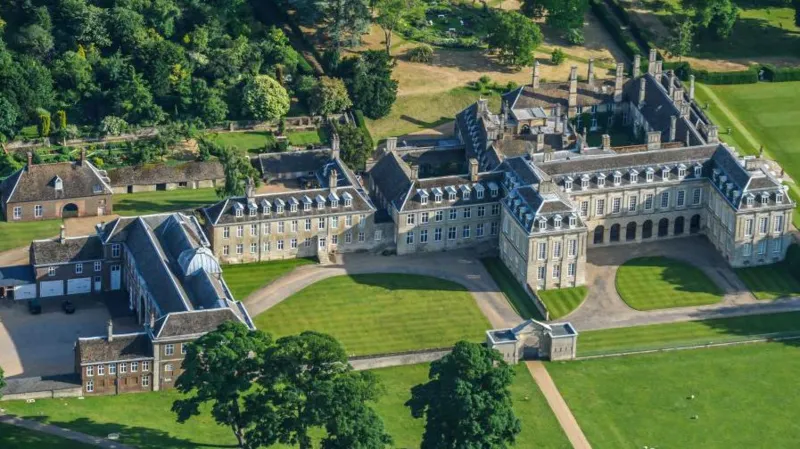An Exeter University art historian has solved the 70-year mystery over the theft of an original oil sketch, by Flemish painter Anthony van Dyck, from a stately home in Northamptonshire. The Portrait of Wolfgang Wilhelm of Pfalz-Neuburg was stolen in 1951 from Boughton House, the home of the Duke of Buccleuch and Queensberry. It was part of a collection – described as “a puzzle missing a central piece” – of 17th Century oil sketches that had been housed at the property since 1682. But the artwork’s disappearance was only noted in 1957, when Mary Montagu Douglas Scott, Duchess of Buccleuch and Queensberry, visited one of Harvard University’s galleries – and saw it on display. Advertisement
Boughton House dates back to the 1700s.
Now, thanks to an investigation by Dr Meredith Hale, senior lecturer in Art History and Visual Culture at the University of Exeter, the riddle of how the sketch made its way to the US via prominent members of the art world – including Christie’s auction house in London – has been solved. Dr Hale noted how through “new archival research in the UK, US and Canada” she was able to “reconstruct the painting’s movements over three generations”. She said it “passed through the hands of experts, conservators, auctioneers, dealers, and collectors from London to Toronto”. “Not only do these sources reveal a dynamic picture of events as they unfold,” she added, “but they highlight the factors that contributed to the success of the theft, foremost among them the conceptual and material complexity of Van Dyck’s iconography project – and the audacity of a thief cloaked in the respectability of expertise.” The artwork has now been returned and the story of its journey has been chronicled in a new paper in the British Art Journal. Advertisement
Money for new curtains The thief, Dr Hale said, was Leonard Gerald Gwynne Ramsey, the editor of the journal The Connoisseur, and a Fellow of the Society of Antiquaries. Ramsey visited Boughton in July 1951 with a photographer in order to gather material for a piece for the journal’s year book. Among the objects housed at the property for safekeeping during the war were the 37 wooden panels from Van Dyck’s unfinished iconography project. Each panel featured an oil-painted sketch of a prominent prince, scholar, military leader or artist, and would have been used to create prints for sale. Correspondence between Ramsey and art historian Ludwig Goldscheider revealed that the former intended to sell two paintings because he needed the money to buy new curtains. According to the research, Goldscheider supplied a certificate of authentication and the picture was sold anonymously at Christie’s for £189 in April 1954. Dr Hale traced the sale of the picture, less than a year later, to an art dealer in New York, before it moved on to a second dealer who sold it for $2,700 to Dr Lillian Malcove; who in turn



